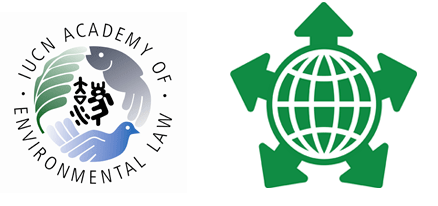Event Title
Location
Room 302
Start Date
2-7-2012 3:00 PM
End Date
2-7-2012 4:40 PM
Description
Human activities damage the environment. They deplete natural resources, generate pollution and wastes, accelerate the loss of forests and biological diversity, as well as threaten the water supply. As populations increase, these problems are exacerbated. Cities bear the brunt of increased human activities on limited land space with limited resources. It is therefore essential that cities adopt a system of environmental governance that will help ensure sustainability. As each city has its own mix of geographic, social, economic, political and environmental problems, it would be simplistic to suggest that there is a formula for sustainability that would fit every city. What is clear is that every city needs an effective environmental management system (EMS) to manage its many activities, to ensure that development is controlled, environmental damage is minimized, natural areas are preserved and its citizens have an enhanced quality of life.
This paper examines the ingredients for sound environmental management in cities, particularly cities in the developing world. It submits that a sound EMS for a city must first start with sound environmental policies, land use planning and good environmental laws. It emphasizes that the best environmental laws will not work if it is not integrated with sound management policies and implementation, starting with the building of the environmental infrastructure, both physical and institutional. This paper then looks at ISO 14001 certification, in the context of a city and asserts that environmental management systems in their current context, focus largely on resolving problems of pollution. There is a clear lack of ecological dimensions in environmental management systems as exemplified by the ISO 14000 series. This paper submits that environmental stewardship and ecological sustainability is at the heart of sustainable development, and the integration of the natural environment within the city has been largely overlooked. It advocates bringing the natural environment back to our cities and the incorporation of this dimension into environmental management systems. The paper introduces the Singapore Index on Cities' Biodiversity, adopted at the CBD's COP-10 Meeting in Nagoya, Japan, 2010.
Presentation
Included in
Environmental Law, Governance, and Management- the Need for Environmental Management Systems for Cities
Room 302
Human activities damage the environment. They deplete natural resources, generate pollution and wastes, accelerate the loss of forests and biological diversity, as well as threaten the water supply. As populations increase, these problems are exacerbated. Cities bear the brunt of increased human activities on limited land space with limited resources. It is therefore essential that cities adopt a system of environmental governance that will help ensure sustainability. As each city has its own mix of geographic, social, economic, political and environmental problems, it would be simplistic to suggest that there is a formula for sustainability that would fit every city. What is clear is that every city needs an effective environmental management system (EMS) to manage its many activities, to ensure that development is controlled, environmental damage is minimized, natural areas are preserved and its citizens have an enhanced quality of life.
This paper examines the ingredients for sound environmental management in cities, particularly cities in the developing world. It submits that a sound EMS for a city must first start with sound environmental policies, land use planning and good environmental laws. It emphasizes that the best environmental laws will not work if it is not integrated with sound management policies and implementation, starting with the building of the environmental infrastructure, both physical and institutional. This paper then looks at ISO 14001 certification, in the context of a city and asserts that environmental management systems in their current context, focus largely on resolving problems of pollution. There is a clear lack of ecological dimensions in environmental management systems as exemplified by the ISO 14000 series. This paper submits that environmental stewardship and ecological sustainability is at the heart of sustainable development, and the integration of the natural environment within the city has been largely overlooked. It advocates bringing the natural environment back to our cities and the incorporation of this dimension into environmental management systems. The paper introduces the Singapore Index on Cities' Biodiversity, adopted at the CBD's COP-10 Meeting in Nagoya, Japan, 2010.

